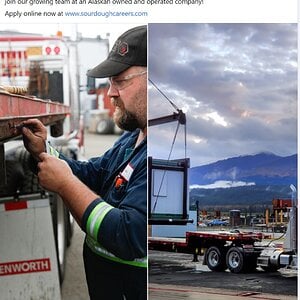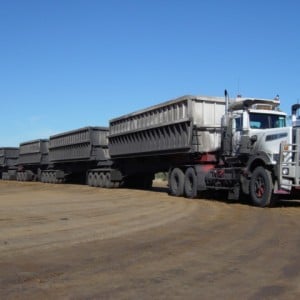
Transporting goods on flatbed semi-trailers is a common practice in the logistics industry. These versatile trailers provide ample space and flexibility for carrying a wide range of cargo, including construction materials, machinery, and oversized loads. However, ensuring the proper securement of the load on a flatbed semi-trailer is of utmost importance to prevent accidents, protect the cargo, and ensure the safety of other road users. In this article, we will discuss essential guidelines and best practices for properly securing a load on a flatbed semi-trailer.
Understanding Load Securement:
Load securement refers to the process of fastening cargo to a trailer in a way that prevents it from shifting, sliding, or falling off during transportation. Effective load securement requires a combination of suitable equipment, correct techniques, and adherence to industry standards and regulations.
Key Guidelines for Proper Load Securement:
- Know the Regulations: Familiarize yourself with the regulations and standards set by the Department of Transportation (DOT) or relevant authorities in your region. These regulations outline the minimum requirements for load securement, including the type and strength of tie-downs, edge protection, and other necessary equipment.
- Assess the Load: Before securing the load, assess its size, weight, and characteristics. This evaluation will help determine the appropriate number of tie-downs, their strength, and the overall load distribution on the trailer.
- Choose Suitable Equipment: Select high-quality tie-downs, such as chains, straps, and binders, that are capable of withstanding the load's weight and tension requirements. Inspect all equipment before use to ensure they are in good condition, without any signs of wear or damage.
- Distribute the Load Evenly: Proper load distribution is crucial for maintaining stability and preventing overloading on specific areas of the trailer. Distribute the cargo evenly, centering the weight over the trailer's axles. If necessary, use dunnage or blocking material to separate and cushion the cargo.
- Secure with Adequate Tie-Downs: Use a sufficient number of tie-downs to secure the load properly. The DOT provides guidelines for the minimum number of tie-downs based on the load's weight and dimensions. Position the tie-downs to prevent lateral, forward, and rearward movement. Avoid tying down to weak or fragile points on the cargo.
- Apply Edge Protection: Use edge protectors, such as corner boards or edge guards, to shield the cargo from potential damage caused by tie-downs or contact with the trailer. These protective measures help distribute the force evenly and prevent cutting or abrasion of the load.
- Regularly Inspect and Retighten: During transit, vibrations and movement can cause tie-downs to loosen. Periodically inspect the load and recheck the tightness of the tie-downs. Retighten them as necessary to ensure the load remains secure throughout the journey.
- Use Additional Safety Measures: Depending on the nature of the cargo, consider using additional safety measures, such as tarping, netting, or covering, to protect the load from environmental factors like rain, wind, or debris.
Proper load securement on flatbed semi-trailers is an essential aspect of safe transportation. Following the guidelines and best practices outlined in this article will help ensure that cargo remains secure, preventing accidents, property damage, and harm to other road users. Remember, load securement is a shared responsibility that contributes to the overall safety and efficiency of the transportation industry. By adhering to regulations and employing sound load securement practices, we can help make our roads safer for everyone involved.













